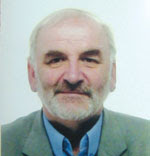Peripheral Neuropathy:
I posted about the possible beginnings of peripheral neuropathy (PN) eleven days ago. In those days I have taken most of the supplements listed on my Supplement Regimen page. The symptoms have not disappeared, however, though they have changed a little, and I am still not certain (beyond a reasonable doubt) that the feelings in my thumbs and feet are in fact PN from the CC-4047 medication.
There is normal sensation, or I should say no sensation, from the affected areas unless they touch something. One thumb always feels fine now, and the other, which was injured and its nerves cut many years ago, does tingle when touched, though the thumb pad is still sensitive to touch in the normal way as well. The soles of both feet also feel tingly when I walk on them, the same sort of tingle that one may feel when a limb is waking up after being "asleep" for lack of blood. Like the thumb, though, the skin of the soles of the feet is still normally sensitive to touch, and in fact the soles of the feet are still ticklish. None of this affects my running yet, nor is it really even very annoying. Yet.
Bottom line: if this is PN, it isn't very bad yet. I discussed all of this with Dr KDS at Mayo today. She advised me to keep them posted if the PN advances at all, because there are things that they can do. She talked about a few prescription medications, such as Neurontin, for managing the symptoms of PN. She did not, however, hold out any hope of a drug that would reverse the PN itself. She also mentioned that one patient had obtained good results from a machine of some sort, and will get me more information on that. When she does, if it's real, I'll post whatever I can about it.
Test Results:
I'm still on the trial of CC-4047 with dexamethasone (DEX), now taking CC-4047 2 mg every day and DEX 8 mg every Sunday night. In the past 28-day cycle IgG has gone from 1060 to 1030 mg/dL, Lambda free light chains from 2.55 to 2.60 mg/dL, and M-Spike from 0.8 to 0.9. Basically, this is no observable change, because each change is well within the measurement error of its test. Everything else is good too - calcium is up but well within range, ALT and AST are down, LDH is actually below its reference range at 130 U/L, WBC and ANC were down a bit last month but are now back up, it's all cool.
Related links:
| My Myeloma | A discussion of my myeloma, not very technical. | ||
| My Treatment History | Not technical. | ||
| My Test Charts | Graphic displays of several key test results over time. | ||
| My Test Result Table | Best with a wide browser window. Very "technical." |
Side effects of the two key drugs, CC-4047 and dexamethasone, are discussed in a previous post. Add peripheral neuropathy to the list.
Here are a few specific test results:
| Test | Mar 04 | Apr 02 | Apr 30 | May 28 | Remarks | |||||
| M-spike g/dL | 0.9 | 0.9 | 0.8 | 0.9 | Best tumor measure | |||||
| IgG mg/dL | 923 | 1060 | 1060 | 1030 | Variation is normal | |||||
| L FLC mg/dL | 2.64 | 3.04 | 2.55 | 2.60 | Free light chains | |||||
| Calcium mg/dL | 9.7 | 9.5 | 9.6 | 10.0 | Below 10.2 is best | |||||
| Creat mg/dL | 1.0 | 1.0 | 0.9 | 1.0 | Kidney, lower is better | |||||
| HGB g/dL | 13.7 | 14.7 | 14.3 | 14.4 | Hemoglobin, normal | |||||
| RBC M/uL | 3.89 | 4.26 | 4.01 | 4.06 | Red cell count, low | |||||
| WBC K/uL | 4.5 | 4.2 | 3.6 | 4.0 | White cells, normal |
Doctor:
Sunshine and I also discussed with Dr KDS:
- Mayo has seen some patients on CC-4047 develop peripheral neuropathy, as they might with thalidomide or Revlimid. There is not yet enough information to say how likely or how serious this side effect might be.
- Dr KDS is going to ask a dermatologist if there is anything to be done about thinning skin from the DEX.
- She confirmed that the DEX can cause wounds to heal more slowly. It seems to take a month now, instead of a week or two, for a little cut to heal.
Since about Christmas I've been eating a grapefruit every day. Grapefruit can increase the potency of some drugs by inhibiting a digestive process that would normally reduce the amount of drug that can go from the stomach into the blood. We have wondered if the grapefruit has played a part in the good M-Spike results in recent months by increasing the concentration of CC-4047 in my blood. Now, of course, we also wonder if it might not increase the severity of peripheral neuropathy symptoms if I'm getting more CC-4047 than expected. Therefore, for the next month, no grapefruit for me. Too bad - I've been looking forward to that daily refreshment.

Organic oatmeal, organic strawberries, organic grapes, mango, banana, organic walnuts, organic nonfat milk.




